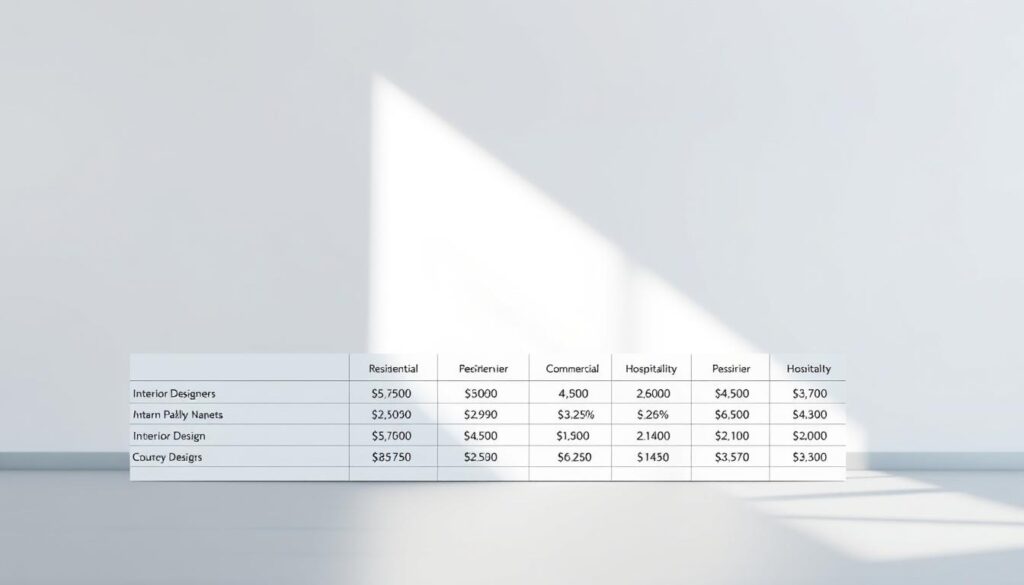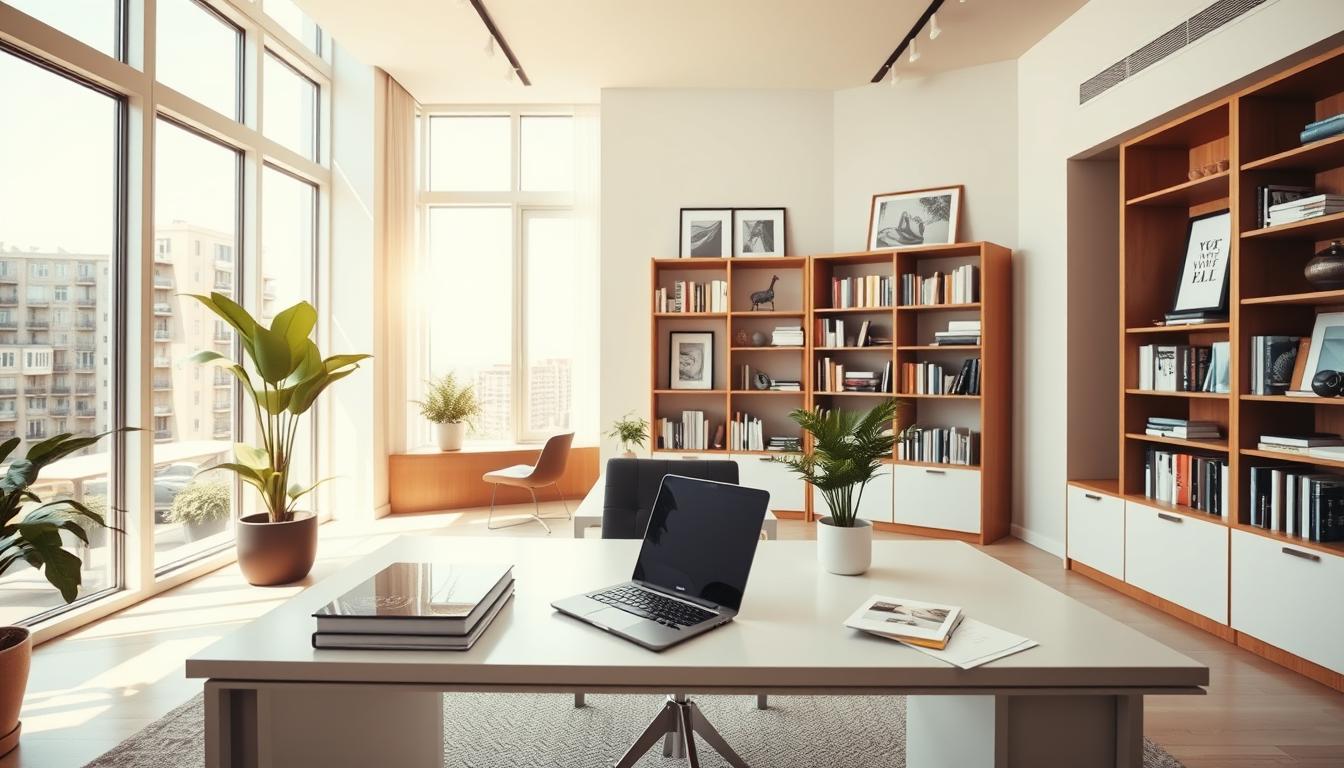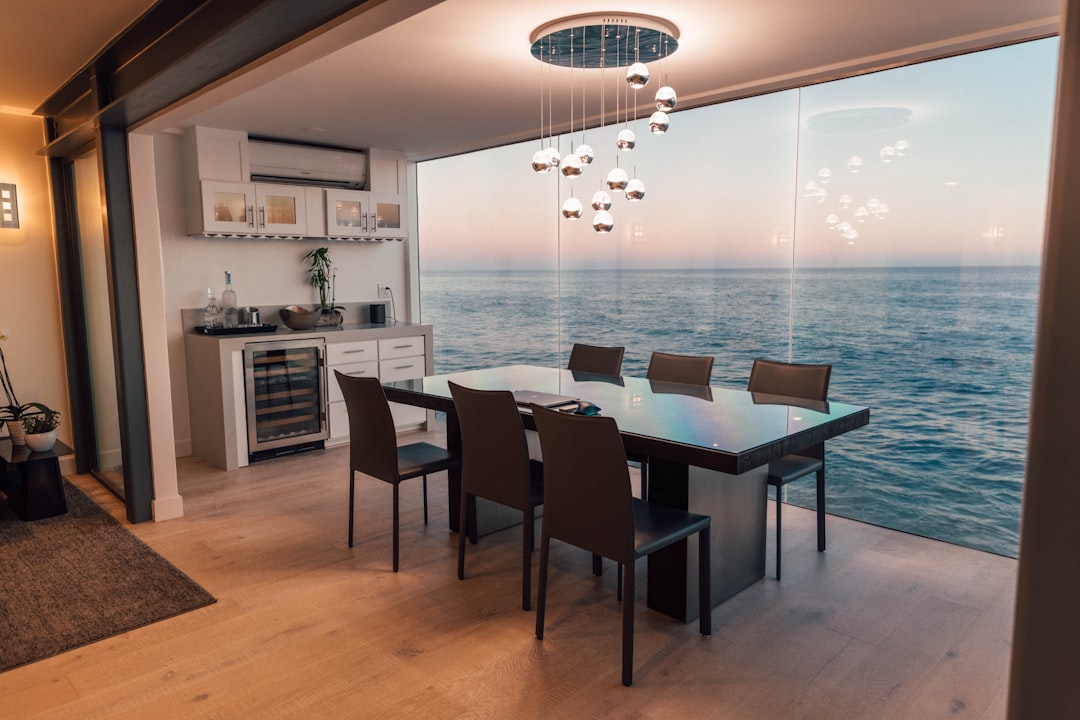The interior design industry is growing fast. The US Bureau of Labor Statistics says there will be a 5% increase in jobs for interior designers by 2030. Knowing how to make more money in this field is key for career growth.
We’ll look at what affects interior design pay in the US. You’ll learn about average salaries and how to boost your income. We’ll also cover different career paths to help you succeed in this field.
Key Takeaways
- Understanding the factors that influence interior designer salaries
- Average pay trends for interior designers in the US
- Tips for increasing your earnings in the industry
- Exploring different career paths for interior designers
- Growth opportunities in the interior design field
Overview of Interior Design as a Profession
Interior design blends art and science to improve our lives and work. It requires understanding design, human behavior, and mixing beauty with usefulness.
What is Interior Design?
Interior design makes spaces look good and work well. It involves planning, picking furniture, choosing colors, and designing lighting. Good interior design needs creativity, technical skills, and knowing what people need.
Importance of Interior Designers in Various Settings
Interior designers are key in homes, offices, and hotels. They make homes show off who we are. In offices, they boost work and customer happiness.
For example, a cool office can make workers happier and more productive. A well-designed store can get more customers and sales. To learn more about interior design jobs, check out https://cozynestplans.com/interior-designer-jobs-find-your-dream-career/.
Designers also help make buildings green and save energy. Their work greatly affects our well-being and work quality. So, they’re very important in many fields.
Factors Influencing Interior Design Salaries
Knowing what affects interior design salaries is key for designers wanting to earn more. A designer’s pay isn’t just one thing. It’s a mix of factors that come together to decide their salary.
Level of Education and Certifications
The education and certifications a designer has greatly affect their salary. Those with a bachelor’s degree or higher in interior design or a related field usually earn more. Also, having certifications like the NCIDQ can boost a designer’s credibility and pay.
Certifications and their impact on salary:
- NCIDQ certification: Can increase salary by up to 15%
- LEED (Leadership in Energy and Environmental Design) certification: Shows expertise in sustainable design, leading to higher pay
- Specialized certifications in areas like kitchen and bath design: Can command higher salaries due to specialized knowledge
Geographic Location
Where a designer works also plays a big role in their salary. Designers in big cities or areas with a high cost of living make more than those in smaller towns or rural areas. For example, designers in cities like New York or San Francisco earn more than those in smaller cities.
Experience and Expertise
Experience and expertise are crucial in setting a designer’s salary. More experienced designers, with a strong portfolio and a good reputation, can earn more. Specializing in a certain area of interior design, like luxury residential or commercial design, also affects earnings.
| Experience Level | Average Salary Range |
|---|---|
| Entry-Level (0-3 years) | $40,000 – $60,000 |
| Mid-Level (4-7 years) | $60,000 – $90,000 |
| Senior-Level (8+ years) | $90,000 – $120,000+ |
By understanding these factors, interior designers can plan their careers better and possibly earn more. They can do this through more education, getting certifications, or gaining experience. There are many ways designers can increase their salaries.
Average Interior Design Salaries in the US
Exploring interior design salaries shows many factors at play. Knowing the average salary is crucial for those starting or growing in this field.
National Average Salary Trends
The national average salary for interior designers is a starting point. Recent data shows an average annual salary of about $60,000. But, this number can change due to several reasons.
Factors influencing national averages include: cost of living, industry standards, and demand for interior design services.
Entry-Level vs. Experienced Designers
Salaries vary greatly between entry-level and experienced designers. Newcomers usually earn around $40,000 a year. They’re just starting to build their portfolios and gain experience.
On the other hand, seasoned designers can make much more. Their salaries range from $80,000 to over $100,000. This depends on their skills, reputation, and the value they offer to clients or employers.
Salary Variations by Specialization
Specialization also plays a big role in interior design salaries. Different areas, like residential, commercial, or sustainable design, have different pay scales.
- Residential designers might earn $55,000 to $70,000 on average.
- Commercial designers, working with big clients, can make $70,000 to $100,000 or more.
- Sustainable or green designers, with their specialized knowledge and certifications, often earn higher salaries.
Grasping these salary differences is essential for those in the interior design field. It helps in making smart career choices.
Types of Employment in Interior Design
Interior design offers many career paths. Designers can pick what fits their skills and interests. You can work as a freelancer, in-house, or on a contract.
Freelance Designers
Freelance designers take on projects with different clients. They enjoy flexibility and autonomy. But, they must handle their own business, find clients, and manage finances.
Freelancing is great for those who like variety. According to our interior design salary guide, they can earn more per project. Yet, their income changes with the projects they get.
In-House Positions
In-house designers work for a company, designing its spaces. They get stability and security with a steady salary and benefits. They work on various projects, like office renovations.
Working in-house lets designers understand a company’s brand well. This helps in creating cohesive designs. But, their work might be limited by the company’s needs and budget.
Contractual Work
Contract designers are hired for specific projects or periods. This mix of freelancing and in-house work offers flexibility and varied projects. They might work through agencies or directly with clients.
Contract work is good for designers wanting to try different sectors and projects. It doesn’t require the long-term commitment of in-house jobs.
| Employment Type | Flexibility | Stability | Potential Earnings |
|---|---|---|---|
| Freelance | High | Low | Variable, potentially high per project |
| In-House | Low | High | Regular salary, benefits |
| Contractual | Medium | Medium | Contract-based, potentially lucrative |
Knowing the different jobs in interior design helps in making career choices. Whether you prefer freelancing, in-house work, or contract jobs, there’s a path for you. It depends on your career goals and what you like.
Benefits and Perks in Interior Design Jobs
Interior designers get more than just a salary. They enjoy many benefits that make their job rewarding and improve their well-being. These perks can change based on the company, the job, and the industry.
Health Insurance and Retirement Plans
Many interior design companies offer great health insurance. This includes medical, dental, and vision care. Health insurance is a big plus, protecting designers from big medical bills. Some employers also offer retirement plans like 401(k) or pensions to help designers save for later.
Designer Lisa Jones says, “Having health insurance and a retirement plan makes me feel secure. It lets me concentrate on my work without worrying about the future.”
Professional Development Opportunities
The world of interior design is always changing. New trends, technologies, and methods pop up all the time. Designers need to keep learning to stay ahead. Many employers provide professional development chances, like workshops, conferences, and online classes, to help designers improve and stay current.
“Investing in professional growth is key for interior designers. It boosts their skills and opens doors to new career paths.”
Flexible Work Arrangements
Thanks to technology, many interior design jobs offer flexible work options. This includes working from home, flexible hours, or shorter workweeks. Flexible work options can make life easier, save time on commuting, and boost productivity.
As the interior design field grows, so do the benefits and perks of these jobs. This makes interior design a great career for those seeking a fulfilling profession.
Interior Design Salary Comparison by Industry
It’s important for interior designers to know how salaries vary in different industries. This knowledge helps them choose the best career path. The industry you work in can greatly affect your salary, with some offering more money than others.
Residential vs. Commercial Design
Interior designers can pick between residential and commercial design. Residential designers work on homes and apartments. Commercial designers focus on offices, restaurants, and shops.
- Residential designers can make between $40,000 and $80,000, based on location and experience.
- Commercial designers might earn $50,000 to $100,000 or more, thanks to the bigger projects.
Commercial design needs a deep understanding of branding and customer experience. This can lead to higher pay because of the unique skills required.
Hospitality and Retail Sectors
The hospitality and retail sectors are fast-paced and creative. Interior designers in these fields must be adaptable and innovative.
- Hospitality designers, who work on hotels, restaurants, and resorts, can make $55,000 to $90,000.
- Retail designers, who focus on shopping experiences, might earn $50,000 to $85,000.
These sectors require a deep understanding of customer behavior and brand identity. Interior designers play a key role in the success of these businesses.
Corporate Environments
Corporate environments offer a good salary for interior designers. They focus on creating efficient and productive workspaces.
- Corporate interior designers can make $60,000 to over $100,000, depending on the company size and prestige.
The trend towards open-plan offices and flexible workspaces has boosted the demand for skilled interior designers. They need to create spaces that encourage collaboration and innovation.

By looking at these industries, interior designers can see the salary potential and growth opportunities. Whether in residential, commercial, hospitality, retail, or corporate settings, experience, specialized skills, and a strong network are key to higher salaries.
Understanding Job Demand and Market Growth
The need for skilled interior designers is growing fast. This is thanks to new trends and the future outlook. It’s key for those wanting to enter the field to understand these changes.
Current Trends in Interior Design
Several trends are shaping interior design today. Sustainability is a big focus, with people wanting eco-friendly designs. Also, technology like smart home systems is becoming more popular.
Wellness-oriented design is another big trend. This means spaces are made to improve health and well-being. Think natural light, comfy furniture, and better air quality.
Future Outlook for Interior Design Careers
The future for interior design careers looks bright. The demand for designers is set to rise. This is because people want spaces that are both sustainable and functional.
The average salary for interior designers is also expected to go up. Things like experience, specialization, and where you work will affect how much you earn.
To make the most of these trends, designers should work on their skills. Focus on sustainable design, technology, and wellness. Keeping up with industry news and learning more is crucial for success.
- Develop skills in sustainable and eco-friendly design.
- Stay updated with the latest technology trends in interior design.
- Focus on wellness-oriented design principles.
Tips for Increasing Your Interior Design Pay
To do well in interior design, you need to be good at designing and managing your career. Skills, networking, and negotiation are key to getting paid more. These strategies help you stand out and earn more.
Building a Strong Portfolio
A good portfolio is vital for designers wanting to earn more. It shows off your style, creativity, and skills to clients and employers.
To make a strong portfolio, remember these tips:
- Show a variety of projects to prove your versatility.
- Highlight your role in each project, even if you were part of a team.
- Use high-quality images and descriptions to tell the story of each design.
Interior Design magazine says, “A well-curated portfolio can make all the difference in securing high-paying clients or landing a prestigious job.”
Networking and Professional Associations
Networking is key for designers wanting to earn more. It helps you find new opportunities, stay updated on trends, and get referrals.
“Networking is not about just connecting people. It’s about connecting people with people, people with ideas, and people with opportunities.” – Michele Jennae, ASID
Being part of professional groups like the American Society of Interior Designers (ASID) offers many benefits. You get access to education, networking events, and job listings.
| Association | Benefits | Membership Fee |
|---|---|---|
| ASID | Continuing education, networking events, job listings | $245/year |
| IIDA | Professional development, design competitions, mentorship | $425/year |
Negotiating Salary and Contracts
Negotiating salary and contracts is crucial for designers to get fair pay. You need to know the market rate, be confident in your worth, and explain your value well.
To negotiate well, designers should:
- Research the market to find a fair salary range or fee structure.
- Prepare a strong case for your requested pay, focusing on your skills, experience, and value.
- Be open to finding solutions that work for both sides.
By using these strategies, designers can increase their earnings and succeed in their careers.
Conclusion: Navigating Your Career in Interior Design
Starting a career in interior design needs a deep understanding of pay, job demand, and market growth. Our guide has given insights into the salary guide for interior design. It shows the top jobs and what makes a career successful.
Key Takeaways
We looked at what affects interior design salaries. This includes education level, where you work, and experience. Knowing these can help designers choose their path and earn more.
To succeed, staying current with trends and outlooks is key. Building a strong portfolio, networking, and negotiating salaries well can lead to better jobs.
Career Growth and Future Outlook
The interior design industry is always changing, bringing new chances. By following our guide, designers can have rewarding careers and keep up with the latest.



